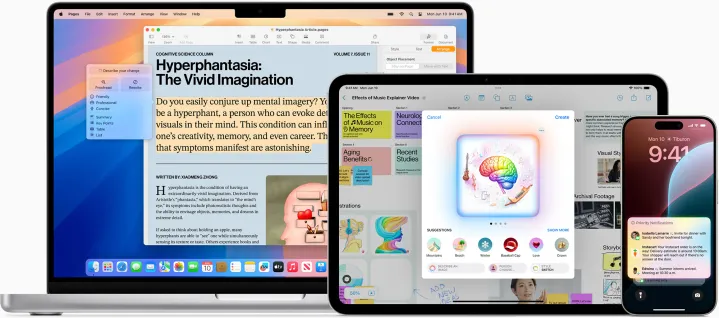
While iOS 18 stole the spotlight at WWDC 2024 with its groundbreaking Apple Intelligence features, Apple didn’t neglect its other product lines. From enhanced desktop experiences to smarter wearables and home entertainment systems, the Cupertino tech giant has something in store for everyone. So buckle up, because we’re about to embark on a whirlwind tour of all the exciting new features and products unveiled at this year’s WWDC.
macOS Sequoia: A Flourishing Desktop Experience
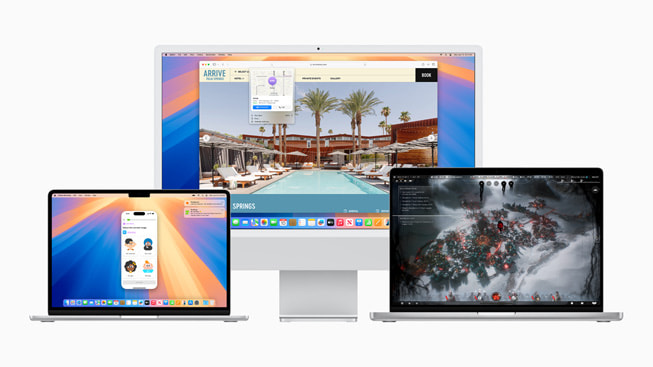
First up, let’s dive into the world of desktop computing with macOS Sequoia, Apple’s latest operating system for Macs. This update promises to revolutionize the way we multitask, focus, and interact with our beloved Macs.
Multitasking Mastery: Stage Manager
Have you ever found yourself drowning in a sea of open windows and apps, struggling to find the one you need? Well, macOS Sequoia has a solution for you: Stage Manager. This innovative feature allows you to group your open apps and windows into organized visual layouts, making it easier to switch between tasks and keeping your workspace clutter-free.
Imagine being able to swipe between your work documents, video call, and research browser windows seamlessly — that’s the power of Stage Manager.
Focus Mode Gets Granular
Remember Focus Mode from previous macOS versions? Well, Sequoia takes it to the next level. Now, you can customize not just notifications and app availability, but even your desktop wallpaper based on your chosen focus, like “Work” or “Personal.” This creates a tailored environment that minimizes distractions and helps you stay on track.
How would you set up your different Focus Modes? Would you have separate modes for work, personal, and maybe even a “deep focus” mode for intense concentration?
Universal Control on Steroids
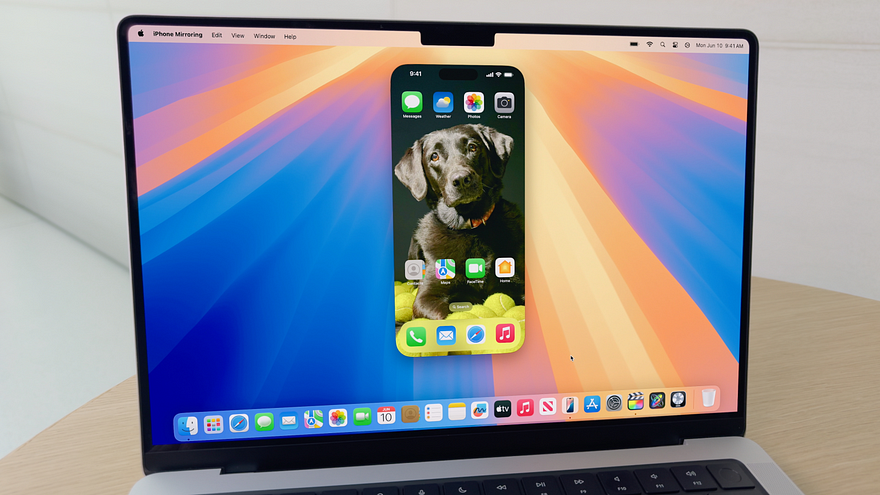
If you thought Universal Control was impressive before, get ready to be blown away. Sequoia takes this feature to new heights, allowing you to seamlessly control your Mac using your iPad or other Apple devices, even transferring content effortlessly between them. Imagine sketching on your iPad and effortlessly dropping it into a Mac presentation — all wirelessly.
I can already picture myself using my iPad as a wireless graphics tablet for my Mac, unleashing my digital art skills like never before.
iPadOS 18: The Tablet Evolves
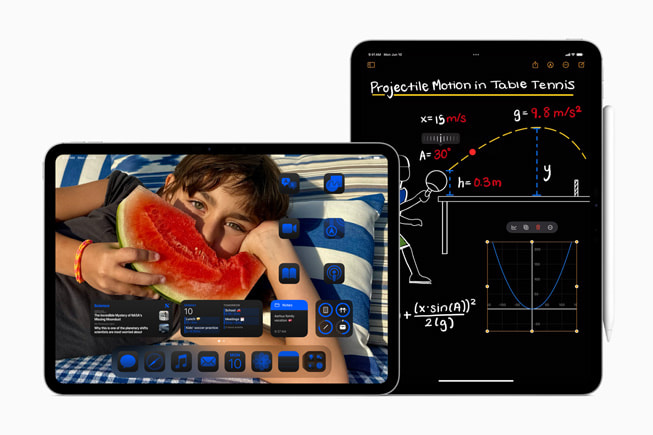
Speaking of iPads, Apple hasn’t forgotten about its beloved tablets. iPadOS 18 brings a host of enhancements that further blur the line between tablet and laptop, making the iPad a more versatile and powerful productivity tool than ever before.
App Switcher Revamp
Have you ever felt like multitasking on the iPad was a bit of a hassle? Well, iPadOS 18 aims to change that with a revamped App Switcher. This new view provides a clear and organized look at all your open apps, including windows within each app. No more squinting at tiny app previews or struggling to navigate complex workflows.
Can you imagine having multiple Pages windows open, each with a different document, and being able to switch between them seamlessly? That’s the power of the new App Switcher.
Desktop-Class Calculator Arrives
Attention spreadsheet warriors and number crunchers! iPadOS 18 finally brings a feature many have long awaited — a full-fledged calculator app with advanced scientific and engineering functions. No more struggling with the limited functionality of the current calculator app. Now, you can tackle complex calculations with ease, right from your iPad.
How often have you wished for a more powerful calculator app on your iPad? This update could be a game-changer for professionals in fields like engineering, finance, and data analysis.
Freeform: Unleash Your Creativity
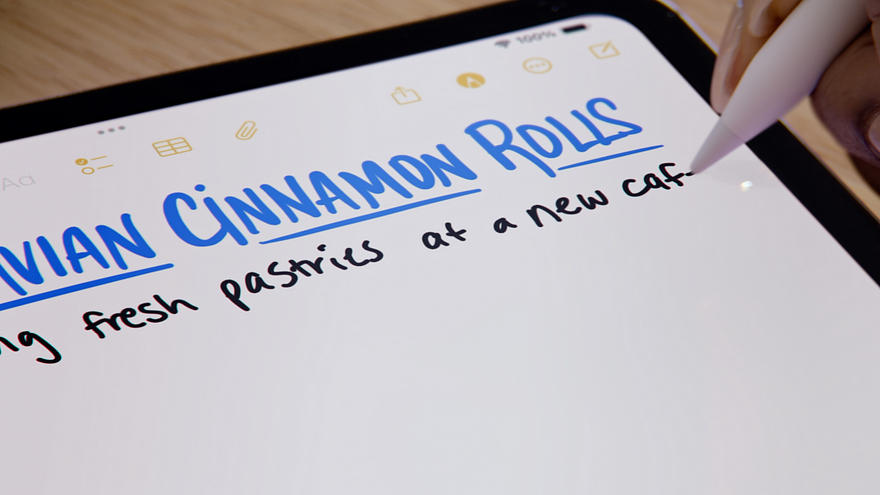
Collaboration gets a major boost with Freeform, a new app designed for brainstorming and note-taking. Think of it as a digital whiteboard where you can combine text, images, web links, and even drawings seamlessly — perfect for creative teams and remote work sessions.
Sidenote: I can already picture myself using Freeform to plan my next big project, with team members from around the world contributing their ideas and sketches in real-time.
watchOS 11: Your Wrist Gets More Capable
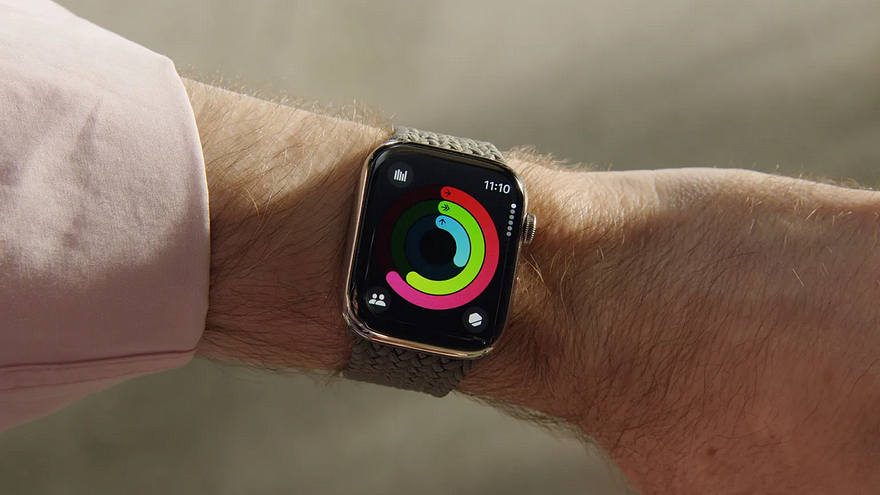
Apple hasn’t forgotten about its wearable line either. watchOS 11 brings a slew of enhancements that cater to fitness enthusiasts and health-conscious users alike.
Advanced Sleep Tracking
If you’ve ever wondered about the quality of your sleep, watchOS 11 has got you covered. The Apple Watch is taking sleep tracking to the next level with advanced sleep stage monitoring. Now, you can see how much time you spend in light, deep, and REM sleep, providing valuable insights into your sleep quality and helping you improve your sleep hygiene.
Customizable Workouts
One size doesn’t fit all when it comes to fitness, and watchOS 11 recognizes that. The new update allows you to create custom workout routines with personalized intervals, recovery periods, and alerts. This tailored approach helps you achieve your fitness goals more effectively, whether you’re training for a marathon or just trying to stay active.
How would you customize your workouts? Would you opt for high-intensity intervals or a more steady pace? The choice is now yours!
Mindfulness App Gets a Revamp
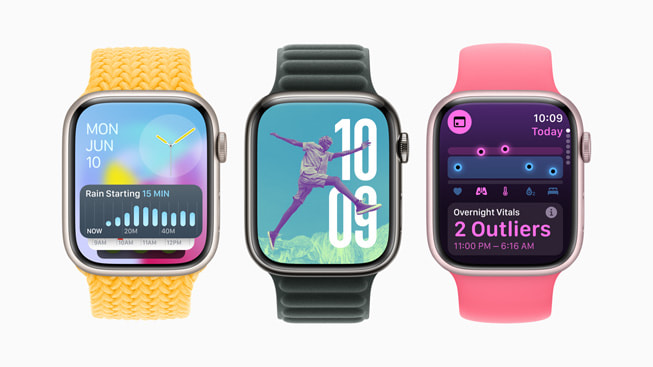
In today’s fast-paced world, finding moments of calm and serenity can be a challenge. That’s why Apple has revamped the Mindfulness app in watchOS 11, introducing new guided meditations and breathing exercises. Whether you’re a seasoned meditation practitioner or just starting out, this update aims to help you reduce stress and find your inner peace throughout the day.
tvOS 18: The Smart TV Gets Smarter
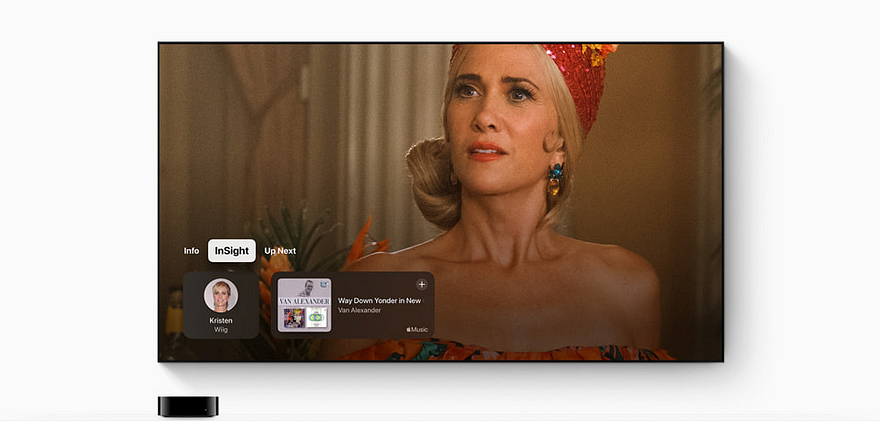
If you thought Apple was done innovating, think again. tvOS 18 brings a host of enhancements that promise to elevate your living room entertainment experience to new heights.
InSight: A New Way to Explore Content
Have you ever found yourself endlessly scrolling through menus, trying to find something interesting to watch? Well, tvOS 18 has a solution for you: InSight. This new intelligent feature uses machine learning to analyze your viewing habits and recommend movies and shows you’ll genuinely enjoy.
Imagine never having to spend hours browsing through content ever again, as InSight seamlessly surfaces tailored recommendations based on your preferences.
Smarter Search
Finding the perfect show or movie is about to become effortless with tvOS 18’s advanced search capabilities. Now, you can search by genre, actor, director, or even specific keywords within the content description. No more wasting time sifting through irrelevant results — tvOS 18 will serve up precisely what you’re looking for.
Enhanced Multi-User Support
Movie nights with friends and family are about to get a whole lot more personalized thanks to tvOS 18’s improved multi-user support. This update allows you to create individual profiles with personalized recommendations and watchlists, ensuring that everyone’s preferences are catered to.
No more fighting over what to watch! With multi-user support, each family member can have their own curated list of recommendations tailored just for them.
The Future Beyond November
While most of the announced features are set to arrive in November, WWDC 2024 also gave us tantalizing glimpses into Apple’s future plans — and let’s just say, they’re nothing short of revolutionary.
Apple Silicon Takes Over
Apple’s transition to its own custom silicon chips has been nothing short of a game-changer, and the company isn’t stopping anytime soon. WWDC 2024 confirmed that Apple will continue its transition to Apple Silicon across its entire product line, promising even more powerful and efficient Macs in the coming year.
AR/VR Headset on the Horizon
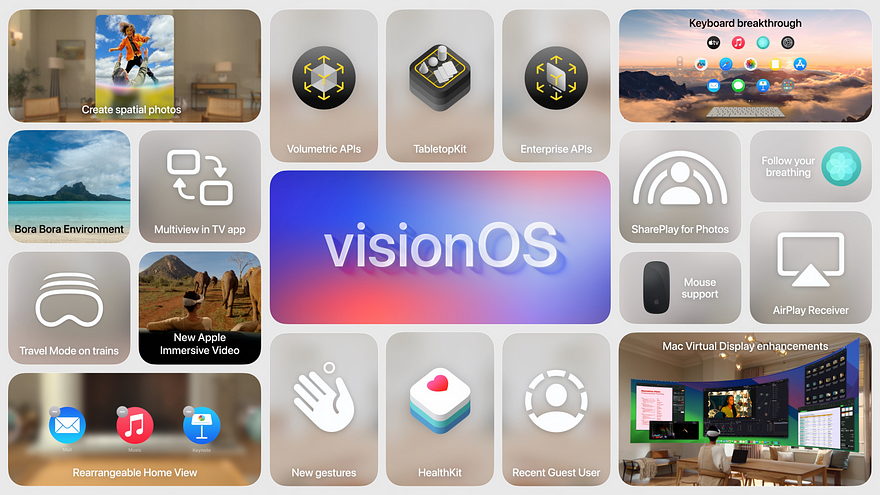
While not officially announced, Apple heavily hinted at its upcoming AR/VR headset during WWDC 2024. Codenamed “Project Cambria,” this mixed reality headset promises to revolutionize how we interact with computers and digital content.
imagine being able to step inside your favorite video game or movie, with virtual objects seamlessly blending into the real world around you? That’s the tantalizing promise of Apple’s AR/VR headset.
Few details were provided, but rumors suggest that Project Cambria will feature advanced eye-tracking technology, high-resolution displays, and powerful processors to deliver immersive augmented and virtual reality experiences. It’s expected to seamlessly integrate with other Apple devices, allowing you to effortlessly transfer content and data between your iPhone, iPad, Mac, and the headset.
How would you envision using an AR/VR headset in your daily life? Would you use it for gaming, productivity, or perhaps even virtual travel experiences?
The Takeaway: A Connected Apple Ecosystem
While each individual announcement at WWDC 2024 was impressive in its own right, the real standout was Apple’s vision of a more connected and intelligent ecosystem. From the personalized experience of Apple Intelligence on the iPhone to enhanced multitasking features across all devices, it’s clear that Apple is doubling down on seamless integration and cohesion.
Start a project on your Mac, continue working on it from your iPad during your commute, and then effortlessly pick up where you left off on your iPhone — that’s the power of a truly connected ecosystem.
But it’s not just about productivity; Apple’s ecosystem enhancements also cater to creativity and entertainment. The ability to sketch on your iPad and seamlessly transfer that artwork to your Mac, or the promise of immersive AR/VR experiences that blend seamlessly with your existing devices, paints a picture of a future where technology becomes an extension of our daily lives, rather than a separate entity.
The Ecosystem Advantage: Apple’s Secret Weapon
While other tech giants like Google and Microsoft have their own ecosystems, Apple’s unified approach across hardware, software, and services gives it a distinct advantage. By controlling every aspect of the user experience, from the silicon chips powering its devices to the operating systems and applications running on them, Apple can ensure a level of cohesion and optimization that is often lacking in multi-vendor ecosystems.
Remember when you had to constantly juggle between different apps, services, and devices that didn’t quite “talk” to each other seamlessly? With Apple’s ecosystem, those frustrations could soon be a thing of the past.
This tight integration also has benefits when it comes to security and privacy. Apple’s end-to-end control over its ecosystem means it can bake in robust security measures and privacy safeguards from the ground up, ensuring that your data and personal information remain protected as it flows between your various devices and services.
How important is ecosystem cohesion and integration to you when choosing your tech products? Is it worth embracing a single ecosystem like Apple’s, or do you prefer the flexibility of mixing and matching devices from different vendors?
The Competitive Landscape: Apple’s Ecosystem vs. the Rest
Of course, Apple isn’t the only player in the tech ecosystem game. Rivals like Google, Microsoft, and even Amazon have their own interconnected suite of products and services. So, how does Apple’s ecosystem stack up against the competition?
Google’s Ecosystem: Powered by AI and Cloud
Google’s ecosystem revolves around its prowess in artificial intelligence, cloud computing, and online services. From the ubiquitous Google Assistant to the seamless integration of Google’s suite of productivity apps (Gmail, Google Docs, etc.), Google’s ecosystem aims to be an ever-present digital assistant, powered by the company’s vast data and machine learning capabilities.
However, Google’s ecosystem also has its weaknesses. While it excels in cloud-based services and AI, it lacks the tight hardware-software integration that Apple offers. Additionally, Google’s track record on privacy and data collection has been a point of contention for many users.
Microsoft’s Ecosystem: Productivity Powerhouse
Microsoft’s ecosystem, on the other hand, is built around its dominance in productivity software and enterprise solutions. From the ubiquitous Office suite to the Windows operating system and Azure cloud platform, Microsoft’s ecosystem caters primarily to businesses and professionals seeking seamless integration between their devices, applications, and cloud services.
However, Microsoft’s ecosystem has historically struggled to gain a foothold in the consumer market, with its mobile and consumer-facing offerings often playing catch-up to rivals like Apple and Google.
Amazon’s Ecosystem: Smart Home and E-Commerce
Amazon’s ecosystem, while not as comprehensive as its competitors, has carved out a niche in the smart home and e-commerce spaces. With its Alexa virtual assistant, Echo smart speakers, and Fire TV devices, Amazon’s ecosystem aims to make your home smarter and more connected, while also serving as a gateway to its vast online retail empire.
However, Amazon’s ecosystem lacks the depth and breadth of its rivals when it comes to productivity tools, mobile devices, and overall software integration.
The Bottom Line: Ecosystem Wars
While each tech giant has its own strengths and weaknesses when it comes to their respective ecosystems, one thing is clear: the battle for ecosystem dominance is heating up. As our lives become increasingly intertwined with technology, the ability to seamlessly move between devices, applications, and services will become paramount.
For Apple, WWDC 2024 was a resounding statement of intent — a bold declaration that the company is doubling down on its ecosystem strategy, leveraging its hardware and software integration to deliver a more cohesive, personalized, and intelligent user experience across all devices and platforms.
As the ecosystem wars rage on, where do your loyalties lie? Are you firmly entrenched in Apple’s walled garden, or do you prefer the flexibility of mixing and matching devices and services from different vendors?
The Future Is Connected: Embrace the Ecosystem
Regardless of which ecosystem you choose to embrace, one thing is certain: the future of technology is inextricably linked to the concept of interconnected devices, services, and experiences. Gone are the days when our smartphones, computers, and smart home devices existed in silos — the future is all about seamless integration and cohesion.
As consumers, we’ll have to make choices about which ecosystem best suits our needs and preferences. Do we prioritize the tight hardware-software integration and privacy focus of Apple’s ecosystem? Or do we opt for the AI-powered convenience and cloud-centric approach of Google’s ecosystem? Perhaps we value the productivity prowess of Microsoft’s offerings, or the smart home and e-commerce integration of Amazon’s ecosystem.
What factors would influence your choice of ecosystem? Is it about seamless integration, AI capabilities, productivity tools, or perhaps something else entirely?
No matter which path you choose, one thing is certain: the future of technology is inextricably linked to the concept of interconnected ecosystems. As our devices become more intelligent, our data more pervasive, and our experiences more immersive, the ability to seamlessly move between different platforms and services will become paramount.
So, as you ponder the announcements and innovations unveiled at WWDC 2024, take a moment to consider not just the individual features and products, but the broader ecosystem strategy at play. Because in the end, it’s your needs that matters.
